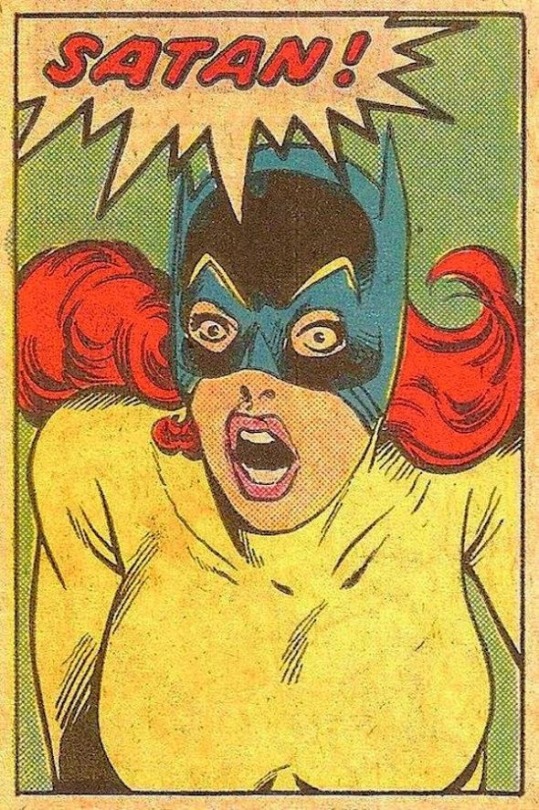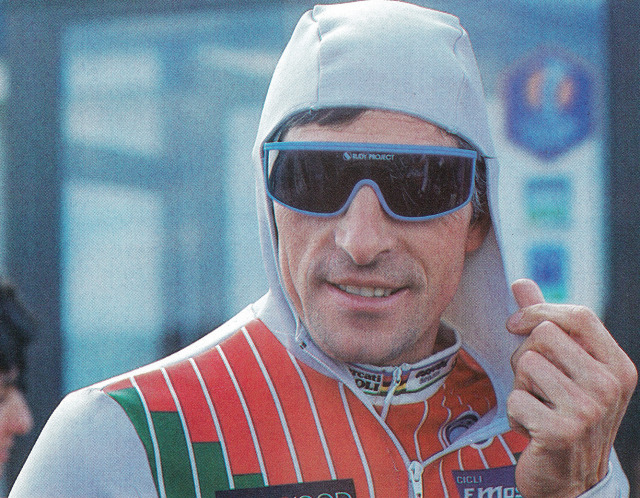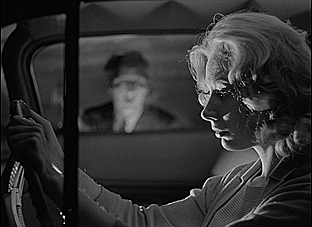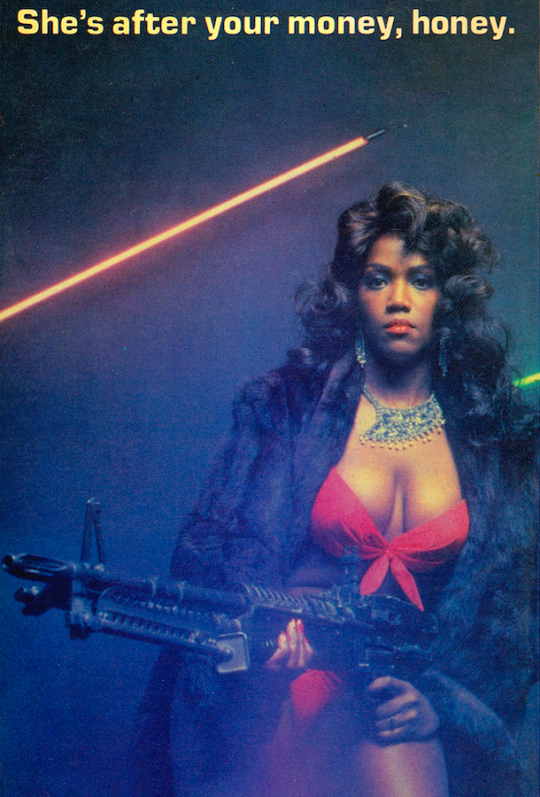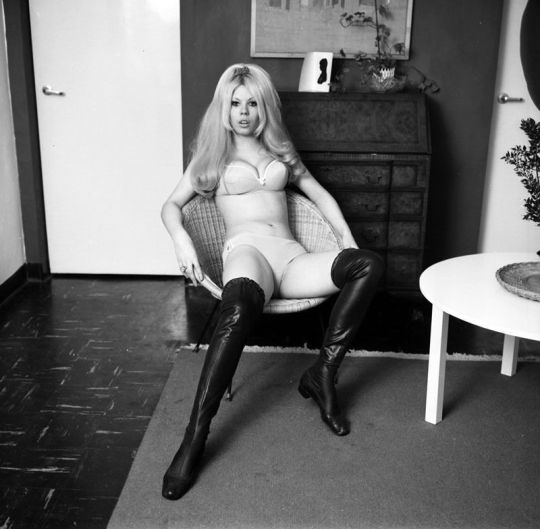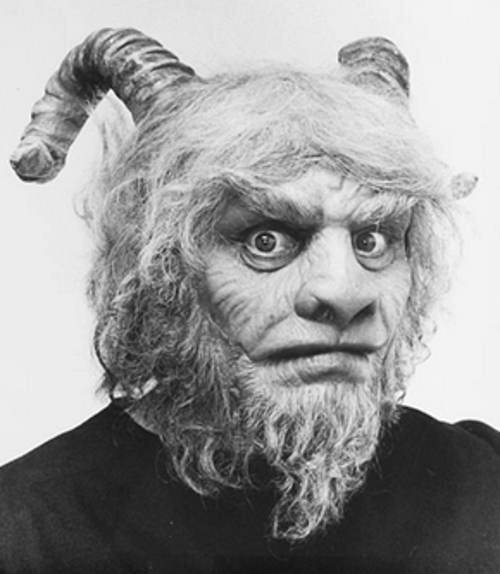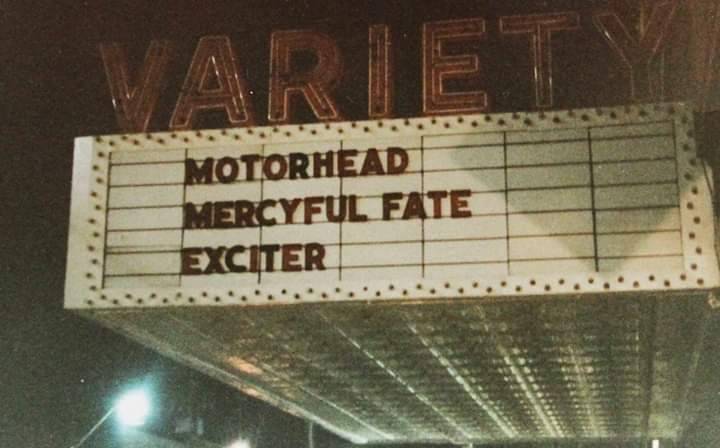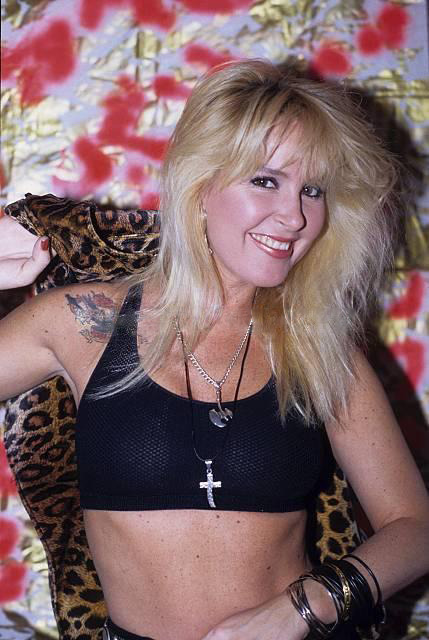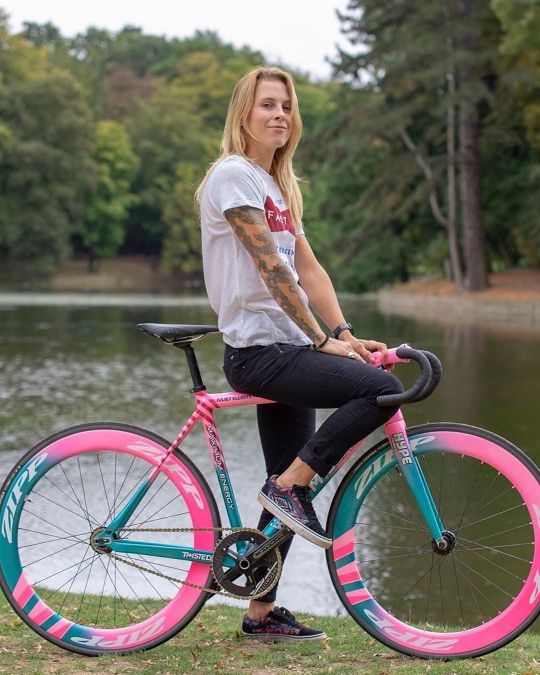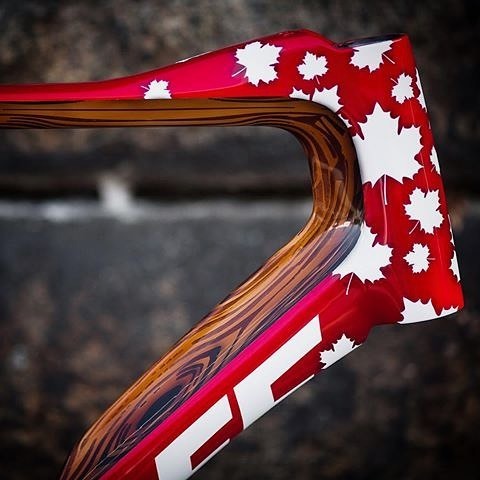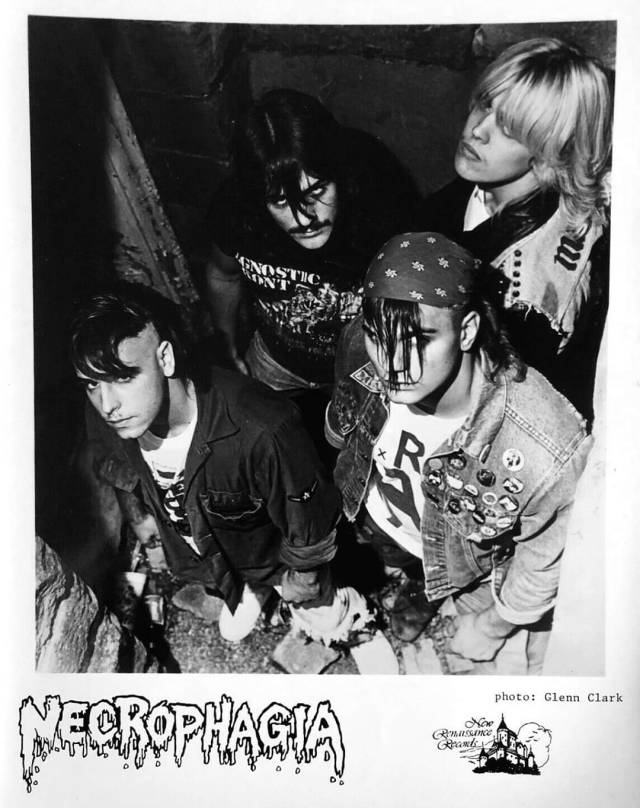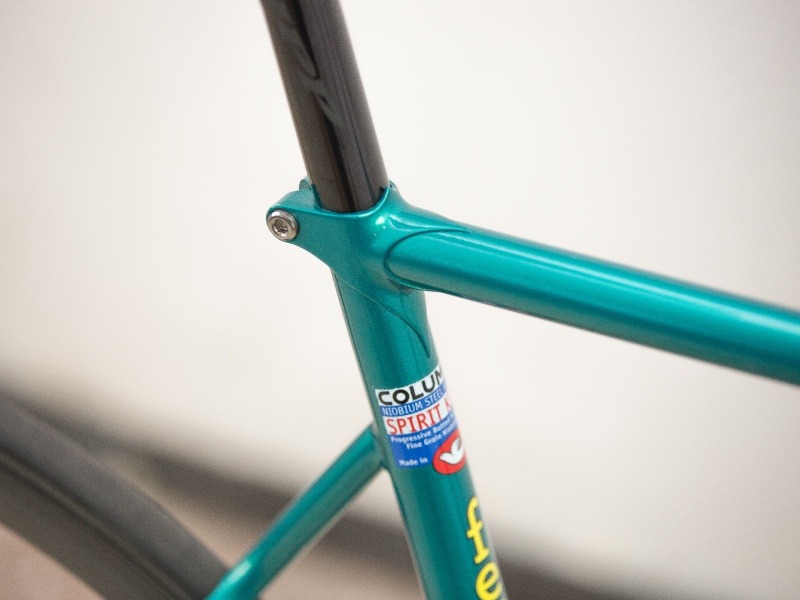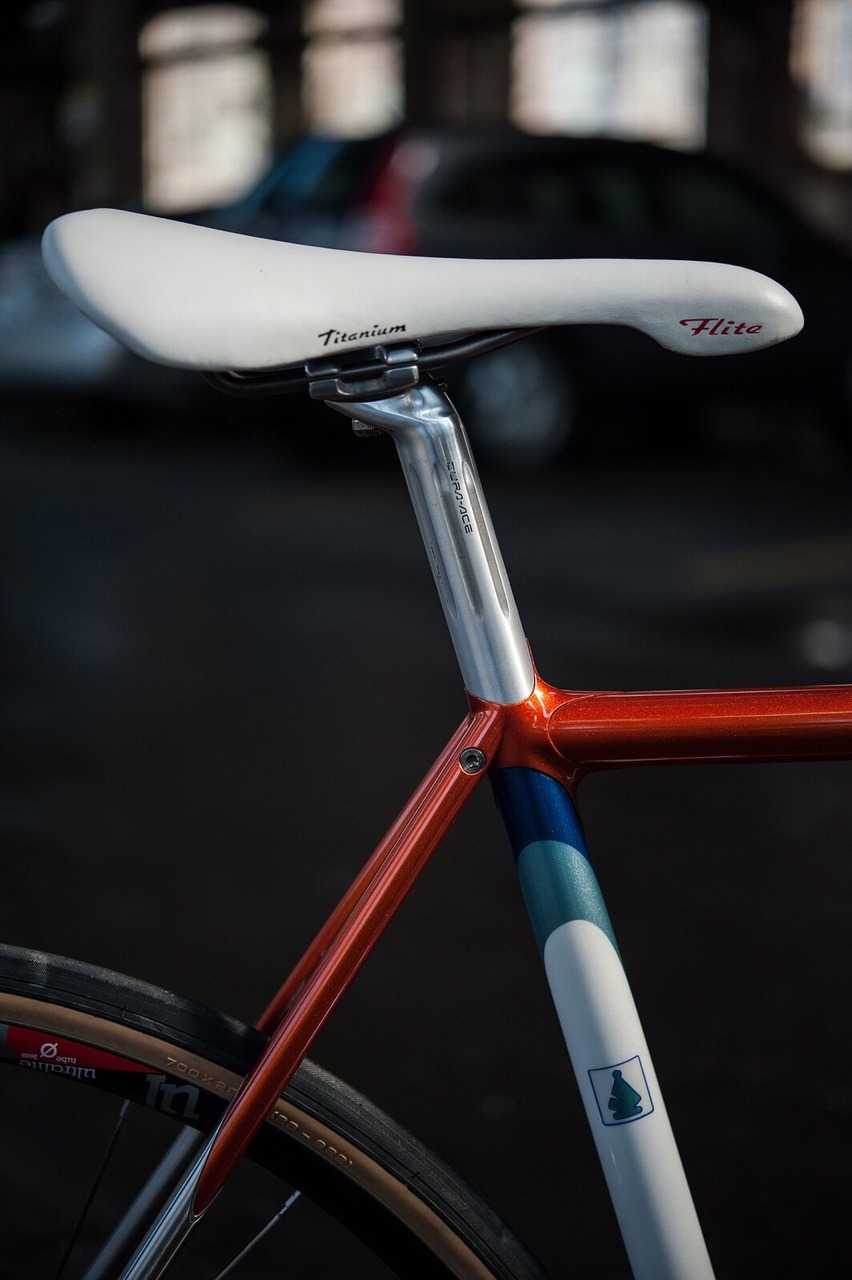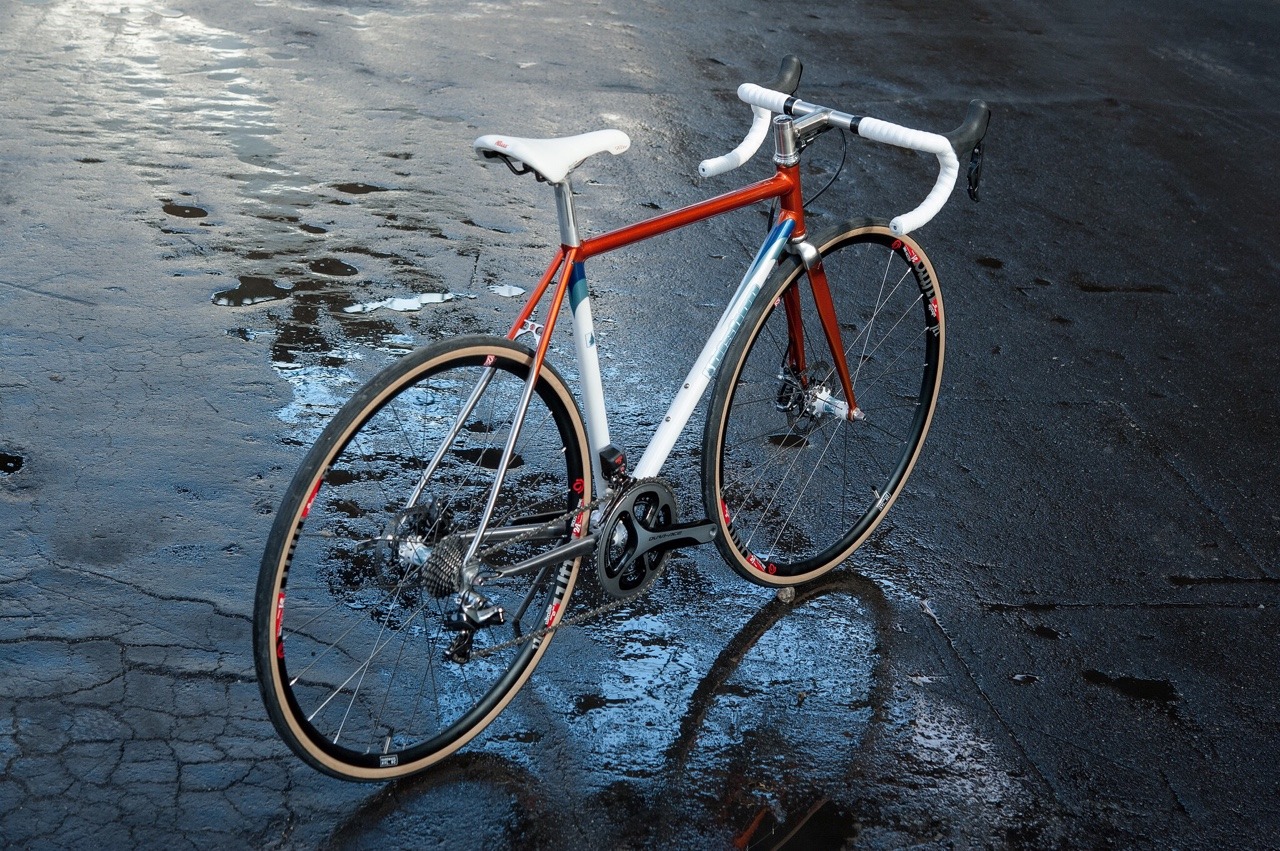
Friday, February 28, 2020
1. Tim Hortons on a Sunday morning before 10-am, or any other coffee/doughnut shop for that matter
2. Meijers grocery/stuff store..twice as expensive and it takes you twice as long to get your shit
3. Island Lake Mtb trail on the weekends, doesn't matter if its 7-am or 5 pm... dodging dogs, trail runners and fat asses isn't my way of spending a day pedaling a bike
4. Narcissistic assholes
5. Talking politics, religion, or abortion with any human
6. Over priced Hamburger joints..
7. Most group rides
8. Nearly everything as of lately on the Taco-Bell menu
9. Beer flavored, like anything other than beer
10. Answering calls from phone numbers i have no idea of
11. Collecting anything...its a polite way to horde
12. Getting into an in depth conversation with Dave G
13. Most shopping malls
14, Buying first generation anything
15. Eating anything called Steak from Subway
16, Going too far into peoples social media profile
17. hard workouts before 9am
18. hard workouts in temperatures below 40 degrees
19. Using anything other than Scott Toilet tissue
20. Getting gas at a station when a fuel truck is filling up there holding tanks
21. Clif Bars or any other nutritional energy bar at convenience store..
22. Answering any DM during the witching hours
23. Any Stouffers entree..yuck
25. Any Velodrome...blame it on poor insurance and fragile bones
26. Making the assumption about anyone or anything
27. Debating shit with people...not worth my time or energy
28. Buying lottery tickets
29. Flying to places that are considered paradise, but then are advised to not leave the hotel compound
30. Chinese unbranded carbon fiber, no matter there track record
31. Drying my socks
32. Trusting Amy with anything
33. Jimmy Johns
35. The Post Office
36. debating anything with the old man
37. Wal-Mart
38. Down Town Ann Arbor
39. Any major sporting event
40. Going to see a movie on opening night
41.Riding three abreast on any road
42. Coddling big John
43.dream cruises
44.car shows
45.dog fights
46.Applebees
47. Significant others personal belongings
48. Iowa
49. Gas Station Pinwheels
50. Star Wars movies
Things TMS avoids..
Thursday, February 27, 2020
Groad Trip: Gravel training vs WorldTour training
After 10 years of training for top-level road racing,
I'm now charting a new course with my coach Scott Nydam.
“Scott, I’m going to need you now more than ever.” Those are the words I said as I picked up his call.
The day VeloNews broke the story of my career transition was in November, heart of the off-season. Scott Nydam, my coach since 2013, has been a constant figure in my pro career but every off-season we turn our attention to our respective families and other obligations for 8 weeks with the promise to catch up once I’m slightly fit and ready to handle what he’s able to prescribe. Scott had known I was contemplating this move but we’d fallen into our off-season break while I was still fleshing out the details. He’d read the news and immediately called me.
In the WorldTour, the training is paramount and every day is important. However, the racing is what really brings you to a new level. There is nothing quite like the Tour Down Under in January to whip your butt into shape and really give you the form bump. You simply cannot go that deep in training alone vs getting pushed constantly out of your comfort zone by the world’s best. In fact, much of the most important training in the WorldTour really does happen in the early season.
Often, come spring time, you are constantly stage racing and recovering in-between, with some sharpening thrown in for good measure if you do happen to get your feet back under you before the next one! I remember pre-Tour of California was always a cherished time for Scott and I because I could come home from Europe a few weeks early, do a proper training block, and really focus on all the details.
Now that I’m a “pro graveleur” I don’t have stage races to bank on for that form bump. My training is going to have to somehow pick up that slack. And that’s what I told Scott. Honestly I don’t know how I can train harder than I did before. We’ve been working together long enough that we have learned what works well. We know how to get me fit as a fiddle and we don’t want to flip the script.
Part of what works is a bit unconventional. Scott is sometimes more of a friend than a coach. Often we will wax philosophic for half an hour on something unrelated to bikes, and when I’m about to hang up, I realize I still don’t have tomorrow’s workout!
He helps me to make sure my head is in the right place and will prescribe specific rest day activities (for example he told me to help my wife paint the guest room last month!) to ensure I really give myself a break. I trust him fully and need his guidance to keep me at my best, mentally and physically. I asked him to join me on this new adventure and I think he’s excited to learn with me as we go.
One big change is that I’m not focusing on the multi-day blocks as much anymore. Three days in a row of 4- to 5-hour rides aren’t as important because I’m generally not preparing for stage races and the necessary day to day recovery. Most races on my calendar are one day and really long. There are a lot more long rides of 5-7 hours, interspersed with more rest days.
Also, I’m not so concerned about being a skinny flyweight mountain goat now. These gravel races are about the grind, that all-day power, putting the pedal to the metal, and keeping it there. I’m attempting to put on some muscle and focusing on more flatland efforts vs pure mountain intervals. I’m naturally lean, built like a pure climber, so the muscle mass has been difficult.
Another challenging element is the copious amount of craft beer on hand at all gravel events! It’s hard for this beer geek to say no. I’m hoping that Beer Watts are a real thing, and that they will come in handy during hour 9 of Dirty Kanza.
The biggest change by far though, as I mentioned in a previous post, is juggling all the other aspects of being a privateer. I’m doing intervals early before showing up to a media event or en-route to one if it’s local. The promotional activities seem to be slowing down now and I am relieved that I can focus a bit more on the bike itself. The big spring objectives are near, The Mid South is the first big dog for me and it’s a short three weeks away.
The best part of this all though: Just enjoying the bike. There have been a lot more adventure rides and soul rides. I’ve been getting out for an epic loop and just jamming when the mood strikes; pure flow riding. This is the ethos of gravel, just getting out there on a personal odyssey. Now, I get to call adventure rides a legitimate part of my training!
Editor’s note from Ben Delaney: After reading Pete’s column, I had to give Scott Nydam a call to hear his side of the story. Below are excerpts of that conversation.
VeloNews: What basic tools and indicators do you use with Pete? Are you a TrainingPeaks and TSS guy, or more a rider feedback and feel coach?
Scott Nydam: You know, we could do 80 percent of what we do we could do with WhatsApp. TrainingPeaks is a great journal. But Pete’s comments are as valuable as anything else as far as power files. Algorithms do not apply to every individual similarly. Levi [Leipheimer] taught me that all the data are just reference points. Your power meter is a reference point. Your heart rate is a reference point. The time it took you to get from the base of your local climb to the top, that’s a reference point. The number one thing is your perceived exertion.
TSS and all that, I take very lightly. Pete, the thing is, he lives by it.
VN: How do you now determine fitness targets for Pete?
SN: It’s a little bit gunslinger. I’m shooting from the hip. I don’t think to set a mark and have him fall short will be productive. I think that’s what road cycling is in general. It sets this bar, and anything but meeting that is a failure, and that’s just bullshit.
The way I see it, it’s just about creating adaptation. You are either going forward, or you are going backward. We are working with energetic systems. You have to stimulate them in the workout, you go to bed, you recover, and you progress.
VN: But you have to track some metrics. What do you look at? And how do you test Pete?
SN: The metrics are all a bit of the tapestry. I look at his numbers, keeping tabs on perceived exertion and response, and I will line out his next 12 days of training. His critical power is where it was last year, for his anaerobic capacity and his VO2.
But here’s the thing: you don’t need to put both feet across the threshold in order to increase the adaptations. Every practice is not a race. There is no real need to know those absolute limits until the race. It’s just, are we going forward with the training, or are we going backward?
There are three to four times a year where I will try to break Pete. Rather then getting his feedback, I will try to see where he is at.
Wednesday, February 26, 2020
Monday, February 24, 2020
Alma Grand Prix of Cyclocross
Sorry The Way Were will not be scene today..
instead we thought you all would like to be updated on the Alma Cx race
We're making a few modifications to the race day schedule this year!
There are still PLENTY of options to double-up on race day, and these changes will help keep things moving along, encourage larger fields on course,
allow for more practice laps, and overall help to streamline the day.
We are still offering 17 total race categories,
but the day schedule is changing.
PLEASE..
help us understand whats going on did we miss something?
WHY will the Cat 3/4/5 men race the same length as in time as
the Pro 1/2/3/4/5?
This seems really confusing..
Please explain..
How Colin Strickland is blazing a new path through American pro cycling
Dirty Kanza winner Colin Strickland is not your average pro cyclist, as we found when we visited him in Austin in late 2019. Strickland's constant tinkering is pushing American pro cycling in a bold new direction.
This story appeared in the March/April 2020 print issue of VeloNews.
A Texas-sized dust cloud fills our nostrils as we edge our rental car closer to Colin Strickland, who pedals a stiff gear along this gravel road south of Austin. Strickland crouches low in the same aerodynamic attack position that became the lasting image of his Dirty Kanza victory. The speedometer edges upward: 20, 23, 25 miles per hour.
Strickland has brought us to this rural corner of Texas to show us why it sits at the center of his past, present, and future. When Strickland worked full-time as an environmental scientist several years ago, he performed a biological analysis of the local hillsides before they were plowed up for a five-lane freeway. These days, the area’s lattice of dirt roads are Strickland’s preferred training grounds as he prepares for gravel cycling’s biggest events.
As we roll into the postcard-sized town of Lockhart, Strickland points us to a nondescript building on a city block that looks like the set of a Clint Eastwood western.
This building, he tells us, is his future.
“We’re going to build it out to look like a legit Texas saloon from the 1880’s,” Strickland says, his eyes widening. “The goal is to make it an event space for weddings and stuff like that. You can charge like $3,500 bucks a pop for a space like that—there’s nothing else like it out here for miles.”
As it turns out, Colin Strickland, the country’s fastest man on a gravel bicycle, is also a real-estate speculator, a talented carpenter, and an aspiring wedding venue operator, among other things. Running a Texas honky-tonk may seem like a bizarre dream for one of the country’s top pro cyclists. In truth, this strange aspiration is just another way in which Colin Strickland is unlike any professional cyclist in the country.
As we have learned on our trip to Austin, Strickland is an endless tinkerer. He’s also a natural entrepreneur, and he has his hand in an ever-expanding number of business partnerships and schemes.
“When Colin is out riding, he isn’t thinking at all about riding—he’s thinking about other projects and stuff he wants to work on,” says pro and longtime friend Payson McElveen. “He’s curious about everything, and the way he’s followed these projects has directly contributed to where he is today.”
Over the past five years Strickland has stayed one step ahead of cycling’s latest fads and fashions, blossoming from a roadie into the king of fixed-gear criteriums as that racing format hit its zenith. Then, Strickland transformed himself into the don of American gravel racing at the exact moment that off-road cycling cracked the mainstream. Along his journey, Strickland redefined what it means to be a professional American cyclist racing in his prime. Rather than race for a professional team, he built his own portfolio of individual sponsors, without the benefit of a past WorldTour career.
Like all of Strickland’s projects, his racing and self-sponsorship has produced a few bumps in the road. Yet he’s always managed to come out on top, with a smile on his face, ready to push the pedals.
So, in late 2019, VeloNews traveled to Austin to see Strickland at his home, and to try and understand how his journey has helped push American cycling in a bold, if slightly bizarre, new direction.
Colin Strickland’s modest four-bedroom home in Austin’s East Congress neighborhood is a museum to his relentless tinkering. A broken motorcycle sits in his garage in mid-repair; a disassembled tea kettle rests on his kitchen counter alongside a plastic tray filled with bolts. Strickland takes us on a tour wearing a pair of homemade leather shoes that he fashioned from the soles of old Birkenstocks. The salvaged Volkswagen parked out front was once home to a family of rats.
Strickland shows us the backyard project that currently occupies his afternoons: a shining aluminum Spartan trailer that he has gutted of its interior. Strickland hopes to one day live in the trailer and rent his house to pad his income.
“I love projects, I love the feeling of finishing one and then moving on to the next one,” Strickland says, displaying images of his home repair projects. “We live in such a consumer culture and everyone is buying new things. I’d rather try to fix something that is old and has a story than just buy
it new.”
Strickland’s house was one such project. He found it in 2014 in foreclosure and in a state of disrepair. But Strickland also saw how Austin’s tech boom was fueling the development of restaurants further south on Congress Avenue, so he bought it and committed himself to years of repairs. Now, five years later, he rents a room in his house to visitors using the online short-term rental website Airbnb.
This pragmatic experimentation has steered Strickland’s cycling career as well. He started riding in 2010 after as part of a fixed-gear group ride through downtown Austin—he and some friends blared Slayer from a boombox and called the event the “Heavy Metal Fitness Ride.” Within a year Strickland moved on from fixies to the local Austin Driveway Series criterium scene, and quickly blossomed into one of the strongest riders in the region. What Strickland lacked in experience he more than made up for in raw, natural power, and he blazed through the amateur categories in a few months.
“It was pretty shocking how fast it happened,” says David Wenger, a local Cat 1 rider and friend. “Colin went from this new dude in the scene to the strongest rider in a year.”
Still, a WorldTour road career seemed like a pipe dream, and Strickland held no grandiose plans for a career in cycling. He was well aware that the sport’s best road racers begin racing as teenagers and spend years in junior development leagues. As a teenager Strickland smoked pot and earned top grades at the local Waldorf school—he was anything but a jock. Strickland was in his mid 20’s when he first pinned on a number.
Plus, Strickland maintained a day job as an environmental scientist with an environmental firm, which paid him $42,000 a year. He crawled through caves to scout for endangered insects and studied watershed for pollution.
“I was always really cognizant of my age and how late I got into cycling,” Strickland says. “Trek-Segafredo doesn’t hire a 26-year-old. It’s like, that’s never going to happen.”
Instead, Strickland viewed racing as a hobby—one that he happened to have world-class talent to pursue. That attitude kept Strickland from falling into the quixotic pathway through the U.S domestic racing scene that young cyclists often pursue. Strickland did race several seasons on the U.S. circuit with the regional Elbowz Racing elite amateur team, crisscrossing the country in a van. But he held no visions of pro contracts and big paydays and was turned off by the desperation he saw out on the road.
“We were always fighting for scraps—it felt like we were a bunch of hungry dogs,” Strickland says. “It’s a bunch of desperate guys who wanted it so bad and didn’t have a lot to fall back on. I’m like if [racing domestically] is my plan B, I’m screwed.”
By 2015 Strickland was feeling burned out on road racing. He was achieving stellar results on the domestic scene, yet he sought events he thought were fun and cool, rather than ones that offered the biggest prize cash. He saw how the Red Hook Criterium had blossomed into a four-race international series with plenty of media attention and sponsorship. In October 2015 he raced the Milan leg of Red Hook and won, beating retired WorldTour pros and top track racers. At the finish journalists peppered him with questions and photographers snapped his image. Specialized reach out to race on its fixed-gear team for the next season.
Strickland pivoted to Red Hook in 2016 and had more success, winning three of four rounds as a member of the Specialized Allez Allez team. At each event more journalists and photographers sought him out, and his image was splashed across social media. Like his second nature for real estate, Strickland surveyed the landscape of American cycling and saw an opportunity for himself.
“Cyclists are in the marketing business and they don’t really know it,” Strickland says. “In road racing you’re just a name on a winners list on a race that happens every year. So, unless you do something cool and it’s remembered or photographed or immortalized in some way, it just gets replaced by the next guy next season. People want to see you doing cool stuff.”
Strickland saw cool stuff bubbling up underneath the traditional models for pro road cycling all across the international calendar. Fixed-gear criteriums were cool, so were nighttime party races like Tulsa Tough. And then there was an entirely new scene that was gaining grassroots appeal across the country: Gravel. In early 2017 Strickland participated in the Castel Grind Gravel Race, a 65-mile gravel race in Texas, and marveled at the grassroots appeal of the event.
“It sold out in like 10 minutes and it’s like, ‘who the hell are all these people?’” Strickland said. “Every road race seems to be dwindling, meanwhile there are these random people showing up in the middle of nowhere to race. I was inspired.”
Going solo
A quick glance at the American cycling scene in 2020 reveals an economy in flux. The Amgen Tour of California cancelled its 2020 edition, and many pro road teams have either shuttered or moved overseas to compete. Meanwhile, gravel events like the Dirty Kanza 200 and SBT GRVL sell out thousands of spots in minutes.
Within this changing landscape, a handful of gravel racers have carved out livelihoods with the backing of various brands. Sponsoring a major race or team costs well above $100,000, while backing an individual rider often costs less than $30,000. The relationship creates more jobs for the cyclist, who must function as athlete, manager, and media producer.
“It’s a confluence of the athletic world and, dare I say it, the influencer world,” says McElveen, whose sponsors back him at gravel and mountain bike events. “It’s a lot more work than the old way, and I pull a lot of 12-hour days. It’s way more of a hustle.”
Strickland’s sponsorship program is no different, and he juggles an endless number of media projects and brand requests throughout the season. His Instagram account is a billboard for his racing projects and sponsor relationships. In late 2019 he produced videos from his Red Bull-backed group ride to and from Lockhart in conjunction with his birthday. Later that month Red Bull produced a video of him eating barbecue; it also published a profile on him for its branded glossy magazine.
“It feels like cycling is changing and an individual can guide it and assert your influence and help shape the future of what it becomes,” Strickland says. “The aesthetic, the vibe, and the rules of what it means to be a bike racer are changing.”
Within the small cadre of full-time gravel racers, Strickland stands apart. Ted King and Peter Stetina all built their respective programs off of their previous pro road careers; Strickland created his based on his current place in American cycling. And Strickland’s program was born from his entrepreneurial streak, rather than a project to follow in retirement. Following his success at Red Hook, Specialized offered Strickland a spot on its fixed-gear team for 2017, however the deal included no actual cash. Strickland thought he could do better on the sponsorship hunt.
“I bet on myself,” Strickland says. “I had met a lot of people and knew there was interest in me.”
He pitched a personal sponsorship idea to Doug Zell, owner of Intelligencia Coffee, who he knew through the Austin community. Energy drink juggernaut Red Bull reached out to him after he won the event’s Last Stand criterium race in San Antonio. Through agent Joao Correa he made industry relationships with Giordana, Pinarello and other brands.
The sponsorship backing paid for his 2017 racing season, which included stops at the Red Hook and USA Crits races, among other events. And in the ensuing years, Strickland has found ways to grow the deals and bring on more brands.
The deals pay him anywhere from a few thousand bucks to the low five-figures, and in total, they add up to more than he earned as an environmental scientist. The Red Bull deal pays him bonuses for victories, and gives him access to the brand’s media and performance infrastructure.
But the sponsorships do not cover travel or, the cash he pays the two other riders who race for him—Strickland manages the budget and steers the cash accordingly. And the expenses can add up quickly. Strickland’s race video from the Belgian Waffle Ride cost $9,000; he paid another $25,000 to a rider and spent thousands more on travel. By the end of 2019, Strickland says he has just $22,000 remaining after taxes. The message is clear: privateer gravel racing isn’t exactly a one-way ticket to riches and fame, and it requires a careful eye and attention to detail. Pro road riders receive a paycheck—Strickland manages a small industry.
In fact, we learn the real challenge of this model while sipping beers with Strickland at a local bar one evening. As the conversation turns to sponsorships and racing tactics, Strickland’s phone buzzes to life with an incoming email, and his cheerful demeanor turns serious. He quietly sips his beer before revealing the nature of the message.
“I really [messed] something up,” Strickland says. “This is a pretty bad one.”
As it turns out, Strickland has double-booked sponsors to the same exclusive category for his 2020 racing program. He thought one sponsor was set to depart after 2019 but didn’t realize he had agreed to a two-year deal with the company for 2019 and 2020. He sold the same category to a new sponsor for the upcoming season, and now, the old sponsor is upset.
Had this occurred in a WorldTour racing team, the gaffe would have resulted in a lawsuit, and likely, a messy PR battle. Of course, the team’s army of managers and sponsor liaisons would have probably caught the error. Strickland’s mistake underlines the challenges of the privateer model. A rider must juggle dozens of tasks outside of training and racing.
“I need a manager, but I can’t afford a manager,” he says. “I don’t write anything down—I keep everything in my head.”
And it’s not the first, and likely not the last, blunder that will arise from Strickland’s financial model and free-spirited approach to cycling. In 2018 Strickland tried and failed to register for the Dirty Kanza 200. He received two entries for the race through the race’s transfer policy, but gave the spots to his teammate, assuming he could find a third. Strickland then missed the deadline to transfer and emailed race co-founder Jim Cummins to beg for a spot, based on his merits at other gravel races. Cummins denied his entry. In a frustrating matter of moments, the cornerstone of his annual racing goals evaporated.
Into the wind
The aroma of smoked meat fills Smitty’s barbecue in Lockhart on this chilly afternoon, and Strickland orders us a healthy portion of brisket to fill our bellies. As we dig into the juicy meats and sides, Strickland retells the story of his improbable win at Dirty Kanza. While the five WorldTour riders at the race generated all the headlines, Strickland believed he was the strongest man in the race.
“Nobody can ride away from me when I’m feeling that good—I don’t care how many [kilojoules] your body can do,” Strickland says. “For me, that’s what works. I like to ride right on the edge of what is sustainable, and I can just stay there longer than everyone else.
The comment is devoid of braggadocio; Strickland delivers it as a simple fact. WorldTour riders train their bodies to withstand constant accelerations and periods of recovery. Strickland, by contrast, trains himself to hold a punishing tempo for hours on end. He’s a self-taught cyclist, and his training sessions are fairly straightforward: he dials up his effort to well over 300 watts and maintains the pace for hours. His body transforms the bars, gels, and occasional barbecue sandwiches into speed.
“I know that my body can take in energy at that effort level for that long,” Strickland says. “Other people get stomach aches or lose energy. I don’t.”
In 2018 Strickland witnessed the full power of his physical engine at the Gravel Worlds race in Nebraska. He flatted early in the 150-mile race and spent the first three hours chasing the front group of favorites. He eventually caught the leaders, dropped them, caught the breakaway, dropped them, and soloed in for the win.
“I think I held 350 watts for three hours and it wasn’t that bad,” Strickland said. “That’s big.”
Still, Strickland’s winning attack at Dirty Kanza with 100 miles remaining caught everyone by surprise. McElveen was speechless when Strickland pulled up next to him in the front pack and revealed his intentions to attack. Strickland asked McElveen if he wanted to come along on the 100-mile sojourn, and McElveen declined.
“I was like, ‘Colin, you’re an idiot, this is a terrible idea,’” McElveen says. “I was for sure he was going on a suicide mission that made zero sense.”
Strickland put in an initial surge and gapped the field, only to be brought back by Joshua Berry. He surged again on a hill and nobody chased, the pack content to let him pedal into the wind. King, who was riding at the front, looked at the strength of the group, and assumed Strickland would fizzle in the heat.
“I looked on with curiosity—it was concerned curiosity,” King said. “I looked in the group and saw the WorldTour guys and thought, ‘I bet we get him back.’”
Strickland’s calculation was correct—as he motored ahead for four additional hours, the group behind melted away under the steady state effort. Ten riders became six and then three, until only Stetina remained. A longtime road pro, Stetina excels on summit finishes, not 10-hour drag races across flat terrain. His power output could not match that of the Cat 1 road racer-turned-Red Hook rider-turned gravel king.
Strickland’s victory brought him international acclaim; it also caught the attention of Jonathan Vaughters, CEO at EF Pro Cycling, who reached out with an enticing offer. Strickland could join the WorldTour team for 2020 to race Paris-Roubaix and other one-day races.
“I was interested because he has a big motor,” Vaughters said. “It’s a super outside bet, but I’ll make that bet.”
The offer marked a pivotal moment in Strickland’s career. For years, he had assumed he was too old and too inexperienced to race at pro cycling’s pinnacle. Cycling was his hobby, not his meal ticket. Now, the doors had opened to the sport’s highest ranks. What should he do?
After months of contemplating the offer, Strickland eventually declined. Racing for EF would mean taking a smaller salary for a one-year deal with no guarantees for the future. Plus, Strickland would need to abandon those individual sponsorships he had spent years building, and instead allow EF to manage his business. In the end, Strickland’s passion for gravel cycling’s entrepreneurial side won him over.
“It was super exciting and hugely flattering,” Strickland says. “But I’ve spent three years trying to position myself and I’ve built this program, and it would mean scrapping that.”
The sun hangs low in the windows of Smitty’s barbecue as Strickland discusses the decision. He slices off another hunk of barbecued meat and washes the meal down with a cold bottle of Shiner Bock. In truth, the rigid world of pro road racing might be a troublesome fit for Strickland. WorldTour riders train, race, and recover, day after tedious day. There’s no room to sandblast the underbelly of an antique aluminum RV, or to rebuild the front end of a crashed motorcycle.
And if that lifestyle leaves no room for tinkering, then what good is it?
This story appeared in the March/April 2020 print issue of VeloNews.
A Texas-sized dust cloud fills our nostrils as we edge our rental car closer to Colin Strickland, who pedals a stiff gear along this gravel road south of Austin. Strickland crouches low in the same aerodynamic attack position that became the lasting image of his Dirty Kanza victory. The speedometer edges upward: 20, 23, 25 miles per hour.
Strickland has brought us to this rural corner of Texas to show us why it sits at the center of his past, present, and future. When Strickland worked full-time as an environmental scientist several years ago, he performed a biological analysis of the local hillsides before they were plowed up for a five-lane freeway. These days, the area’s lattice of dirt roads are Strickland’s preferred training grounds as he prepares for gravel cycling’s biggest events.
As we roll into the postcard-sized town of Lockhart, Strickland points us to a nondescript building on a city block that looks like the set of a Clint Eastwood western.
This building, he tells us, is his future.
“We’re going to build it out to look like a legit Texas saloon from the 1880’s,” Strickland says, his eyes widening. “The goal is to make it an event space for weddings and stuff like that. You can charge like $3,500 bucks a pop for a space like that—there’s nothing else like it out here for miles.”
As it turns out, Colin Strickland, the country’s fastest man on a gravel bicycle, is also a real-estate speculator, a talented carpenter, and an aspiring wedding venue operator, among other things. Running a Texas honky-tonk may seem like a bizarre dream for one of the country’s top pro cyclists. In truth, this strange aspiration is just another way in which Colin Strickland is unlike any professional cyclist in the country.
As we have learned on our trip to Austin, Strickland is an endless tinkerer. He’s also a natural entrepreneur, and he has his hand in an ever-expanding number of business partnerships and schemes.
“When Colin is out riding, he isn’t thinking at all about riding—he’s thinking about other projects and stuff he wants to work on,” says pro and longtime friend Payson McElveen. “He’s curious about everything, and the way he’s followed these projects has directly contributed to where he is today.”
Over the past five years Strickland has stayed one step ahead of cycling’s latest fads and fashions, blossoming from a roadie into the king of fixed-gear criteriums as that racing format hit its zenith. Then, Strickland transformed himself into the don of American gravel racing at the exact moment that off-road cycling cracked the mainstream. Along his journey, Strickland redefined what it means to be a professional American cyclist racing in his prime. Rather than race for a professional team, he built his own portfolio of individual sponsors, without the benefit of a past WorldTour career.
Like all of Strickland’s projects, his racing and self-sponsorship has produced a few bumps in the road. Yet he’s always managed to come out on top, with a smile on his face, ready to push the pedals.
So, in late 2019, VeloNews traveled to Austin to see Strickland at his home, and to try and understand how his journey has helped push American cycling in a bold, if slightly bizarre, new direction.
Colin Strickland’s modest four-bedroom home in Austin’s East Congress neighborhood is a museum to his relentless tinkering. A broken motorcycle sits in his garage in mid-repair; a disassembled tea kettle rests on his kitchen counter alongside a plastic tray filled with bolts. Strickland takes us on a tour wearing a pair of homemade leather shoes that he fashioned from the soles of old Birkenstocks. The salvaged Volkswagen parked out front was once home to a family of rats.
Strickland shows us the backyard project that currently occupies his afternoons: a shining aluminum Spartan trailer that he has gutted of its interior. Strickland hopes to one day live in the trailer and rent his house to pad his income.
“I love projects, I love the feeling of finishing one and then moving on to the next one,” Strickland says, displaying images of his home repair projects. “We live in such a consumer culture and everyone is buying new things. I’d rather try to fix something that is old and has a story than just buy
it new.”
Strickland’s house was one such project. He found it in 2014 in foreclosure and in a state of disrepair. But Strickland also saw how Austin’s tech boom was fueling the development of restaurants further south on Congress Avenue, so he bought it and committed himself to years of repairs. Now, five years later, he rents a room in his house to visitors using the online short-term rental website Airbnb.
This pragmatic experimentation has steered Strickland’s cycling career as well. He started riding in 2010 after as part of a fixed-gear group ride through downtown Austin—he and some friends blared Slayer from a boombox and called the event the “Heavy Metal Fitness Ride.” Within a year Strickland moved on from fixies to the local Austin Driveway Series criterium scene, and quickly blossomed into one of the strongest riders in the region. What Strickland lacked in experience he more than made up for in raw, natural power, and he blazed through the amateur categories in a few months.
“It was pretty shocking how fast it happened,” says David Wenger, a local Cat 1 rider and friend. “Colin went from this new dude in the scene to the strongest rider in a year.”
Still, a WorldTour road career seemed like a pipe dream, and Strickland held no grandiose plans for a career in cycling. He was well aware that the sport’s best road racers begin racing as teenagers and spend years in junior development leagues. As a teenager Strickland smoked pot and earned top grades at the local Waldorf school—he was anything but a jock. Strickland was in his mid 20’s when he first pinned on a number.
Plus, Strickland maintained a day job as an environmental scientist with an environmental firm, which paid him $42,000 a year. He crawled through caves to scout for endangered insects and studied watershed for pollution.
“I was always really cognizant of my age and how late I got into cycling,” Strickland says. “Trek-Segafredo doesn’t hire a 26-year-old. It’s like, that’s never going to happen.”
Instead, Strickland viewed racing as a hobby—one that he happened to have world-class talent to pursue. That attitude kept Strickland from falling into the quixotic pathway through the U.S domestic racing scene that young cyclists often pursue. Strickland did race several seasons on the U.S. circuit with the regional Elbowz Racing elite amateur team, crisscrossing the country in a van. But he held no visions of pro contracts and big paydays and was turned off by the desperation he saw out on the road.
“We were always fighting for scraps—it felt like we were a bunch of hungry dogs,” Strickland says. “It’s a bunch of desperate guys who wanted it so bad and didn’t have a lot to fall back on. I’m like if [racing domestically] is my plan B, I’m screwed.”
By 2015 Strickland was feeling burned out on road racing. He was achieving stellar results on the domestic scene, yet he sought events he thought were fun and cool, rather than ones that offered the biggest prize cash. He saw how the Red Hook Criterium had blossomed into a four-race international series with plenty of media attention and sponsorship. In October 2015 he raced the Milan leg of Red Hook and won, beating retired WorldTour pros and top track racers. At the finish journalists peppered him with questions and photographers snapped his image. Specialized reach out to race on its fixed-gear team for the next season.
Strickland pivoted to Red Hook in 2016 and had more success, winning three of four rounds as a member of the Specialized Allez Allez team. At each event more journalists and photographers sought him out, and his image was splashed across social media. Like his second nature for real estate, Strickland surveyed the landscape of American cycling and saw an opportunity for himself.
“Cyclists are in the marketing business and they don’t really know it,” Strickland says. “In road racing you’re just a name on a winners list on a race that happens every year. So, unless you do something cool and it’s remembered or photographed or immortalized in some way, it just gets replaced by the next guy next season. People want to see you doing cool stuff.”
Strickland saw cool stuff bubbling up underneath the traditional models for pro road cycling all across the international calendar. Fixed-gear criteriums were cool, so were nighttime party races like Tulsa Tough. And then there was an entirely new scene that was gaining grassroots appeal across the country: Gravel. In early 2017 Strickland participated in the Castel Grind Gravel Race, a 65-mile gravel race in Texas, and marveled at the grassroots appeal of the event.
“It sold out in like 10 minutes and it’s like, ‘who the hell are all these people?’” Strickland said. “Every road race seems to be dwindling, meanwhile there are these random people showing up in the middle of nowhere to race. I was inspired.”
Going solo
A quick glance at the American cycling scene in 2020 reveals an economy in flux. The Amgen Tour of California cancelled its 2020 edition, and many pro road teams have either shuttered or moved overseas to compete. Meanwhile, gravel events like the Dirty Kanza 200 and SBT GRVL sell out thousands of spots in minutes.
Within this changing landscape, a handful of gravel racers have carved out livelihoods with the backing of various brands. Sponsoring a major race or team costs well above $100,000, while backing an individual rider often costs less than $30,000. The relationship creates more jobs for the cyclist, who must function as athlete, manager, and media producer.
“It’s a confluence of the athletic world and, dare I say it, the influencer world,” says McElveen, whose sponsors back him at gravel and mountain bike events. “It’s a lot more work than the old way, and I pull a lot of 12-hour days. It’s way more of a hustle.”
Strickland’s sponsorship program is no different, and he juggles an endless number of media projects and brand requests throughout the season. His Instagram account is a billboard for his racing projects and sponsor relationships. In late 2019 he produced videos from his Red Bull-backed group ride to and from Lockhart in conjunction with his birthday. Later that month Red Bull produced a video of him eating barbecue; it also published a profile on him for its branded glossy magazine.
“It feels like cycling is changing and an individual can guide it and assert your influence and help shape the future of what it becomes,” Strickland says. “The aesthetic, the vibe, and the rules of what it means to be a bike racer are changing.”
Within the small cadre of full-time gravel racers, Strickland stands apart. Ted King and Peter Stetina all built their respective programs off of their previous pro road careers; Strickland created his based on his current place in American cycling. And Strickland’s program was born from his entrepreneurial streak, rather than a project to follow in retirement. Following his success at Red Hook, Specialized offered Strickland a spot on its fixed-gear team for 2017, however the deal included no actual cash. Strickland thought he could do better on the sponsorship hunt.
“I bet on myself,” Strickland says. “I had met a lot of people and knew there was interest in me.”
He pitched a personal sponsorship idea to Doug Zell, owner of Intelligencia Coffee, who he knew through the Austin community. Energy drink juggernaut Red Bull reached out to him after he won the event’s Last Stand criterium race in San Antonio. Through agent Joao Correa he made industry relationships with Giordana, Pinarello and other brands.
The sponsorship backing paid for his 2017 racing season, which included stops at the Red Hook and USA Crits races, among other events. And in the ensuing years, Strickland has found ways to grow the deals and bring on more brands.
The deals pay him anywhere from a few thousand bucks to the low five-figures, and in total, they add up to more than he earned as an environmental scientist. The Red Bull deal pays him bonuses for victories, and gives him access to the brand’s media and performance infrastructure.
But the sponsorships do not cover travel or, the cash he pays the two other riders who race for him—Strickland manages the budget and steers the cash accordingly. And the expenses can add up quickly. Strickland’s race video from the Belgian Waffle Ride cost $9,000; he paid another $25,000 to a rider and spent thousands more on travel. By the end of 2019, Strickland says he has just $22,000 remaining after taxes. The message is clear: privateer gravel racing isn’t exactly a one-way ticket to riches and fame, and it requires a careful eye and attention to detail. Pro road riders receive a paycheck—Strickland manages a small industry.
In fact, we learn the real challenge of this model while sipping beers with Strickland at a local bar one evening. As the conversation turns to sponsorships and racing tactics, Strickland’s phone buzzes to life with an incoming email, and his cheerful demeanor turns serious. He quietly sips his beer before revealing the nature of the message.
“I really [messed] something up,” Strickland says. “This is a pretty bad one.”
As it turns out, Strickland has double-booked sponsors to the same exclusive category for his 2020 racing program. He thought one sponsor was set to depart after 2019 but didn’t realize he had agreed to a two-year deal with the company for 2019 and 2020. He sold the same category to a new sponsor for the upcoming season, and now, the old sponsor is upset.
Had this occurred in a WorldTour racing team, the gaffe would have resulted in a lawsuit, and likely, a messy PR battle. Of course, the team’s army of managers and sponsor liaisons would have probably caught the error. Strickland’s mistake underlines the challenges of the privateer model. A rider must juggle dozens of tasks outside of training and racing.
“I need a manager, but I can’t afford a manager,” he says. “I don’t write anything down—I keep everything in my head.”
And it’s not the first, and likely not the last, blunder that will arise from Strickland’s financial model and free-spirited approach to cycling. In 2018 Strickland tried and failed to register for the Dirty Kanza 200. He received two entries for the race through the race’s transfer policy, but gave the spots to his teammate, assuming he could find a third. Strickland then missed the deadline to transfer and emailed race co-founder Jim Cummins to beg for a spot, based on his merits at other gravel races. Cummins denied his entry. In a frustrating matter of moments, the cornerstone of his annual racing goals evaporated.
Into the wind
The aroma of smoked meat fills Smitty’s barbecue in Lockhart on this chilly afternoon, and Strickland orders us a healthy portion of brisket to fill our bellies. As we dig into the juicy meats and sides, Strickland retells the story of his improbable win at Dirty Kanza. While the five WorldTour riders at the race generated all the headlines, Strickland believed he was the strongest man in the race.
“Nobody can ride away from me when I’m feeling that good—I don’t care how many [kilojoules] your body can do,” Strickland says. “For me, that’s what works. I like to ride right on the edge of what is sustainable, and I can just stay there longer than everyone else.
The comment is devoid of braggadocio; Strickland delivers it as a simple fact. WorldTour riders train their bodies to withstand constant accelerations and periods of recovery. Strickland, by contrast, trains himself to hold a punishing tempo for hours on end. He’s a self-taught cyclist, and his training sessions are fairly straightforward: he dials up his effort to well over 300 watts and maintains the pace for hours. His body transforms the bars, gels, and occasional barbecue sandwiches into speed.
“I know that my body can take in energy at that effort level for that long,” Strickland says. “Other people get stomach aches or lose energy. I don’t.”
In 2018 Strickland witnessed the full power of his physical engine at the Gravel Worlds race in Nebraska. He flatted early in the 150-mile race and spent the first three hours chasing the front group of favorites. He eventually caught the leaders, dropped them, caught the breakaway, dropped them, and soloed in for the win.
“I think I held 350 watts for three hours and it wasn’t that bad,” Strickland said. “That’s big.”
Still, Strickland’s winning attack at Dirty Kanza with 100 miles remaining caught everyone by surprise. McElveen was speechless when Strickland pulled up next to him in the front pack and revealed his intentions to attack. Strickland asked McElveen if he wanted to come along on the 100-mile sojourn, and McElveen declined.
“I was like, ‘Colin, you’re an idiot, this is a terrible idea,’” McElveen says. “I was for sure he was going on a suicide mission that made zero sense.”
Strickland put in an initial surge and gapped the field, only to be brought back by Joshua Berry. He surged again on a hill and nobody chased, the pack content to let him pedal into the wind. King, who was riding at the front, looked at the strength of the group, and assumed Strickland would fizzle in the heat.
“I looked on with curiosity—it was concerned curiosity,” King said. “I looked in the group and saw the WorldTour guys and thought, ‘I bet we get him back.’”
Strickland’s calculation was correct—as he motored ahead for four additional hours, the group behind melted away under the steady state effort. Ten riders became six and then three, until only Stetina remained. A longtime road pro, Stetina excels on summit finishes, not 10-hour drag races across flat terrain. His power output could not match that of the Cat 1 road racer-turned-Red Hook rider-turned gravel king.
Strickland’s victory brought him international acclaim; it also caught the attention of Jonathan Vaughters, CEO at EF Pro Cycling, who reached out with an enticing offer. Strickland could join the WorldTour team for 2020 to race Paris-Roubaix and other one-day races.
“I was interested because he has a big motor,” Vaughters said. “It’s a super outside bet, but I’ll make that bet.”
The offer marked a pivotal moment in Strickland’s career. For years, he had assumed he was too old and too inexperienced to race at pro cycling’s pinnacle. Cycling was his hobby, not his meal ticket. Now, the doors had opened to the sport’s highest ranks. What should he do?
After months of contemplating the offer, Strickland eventually declined. Racing for EF would mean taking a smaller salary for a one-year deal with no guarantees for the future. Plus, Strickland would need to abandon those individual sponsorships he had spent years building, and instead allow EF to manage his business. In the end, Strickland’s passion for gravel cycling’s entrepreneurial side won him over.
“It was super exciting and hugely flattering,” Strickland says. “But I’ve spent three years trying to position myself and I’ve built this program, and it would mean scrapping that.”
The sun hangs low in the windows of Smitty’s barbecue as Strickland discusses the decision. He slices off another hunk of barbecued meat and washes the meal down with a cold bottle of Shiner Bock. In truth, the rigid world of pro road racing might be a troublesome fit for Strickland. WorldTour riders train, race, and recover, day after tedious day. There’s no room to sandblast the underbelly of an antique aluminum RV, or to rebuild the front end of a crashed motorcycle.
And if that lifestyle leaves no room for tinkering, then what good is it?
Sunday, February 23, 2020
Subscribe to:
Posts (Atom)


